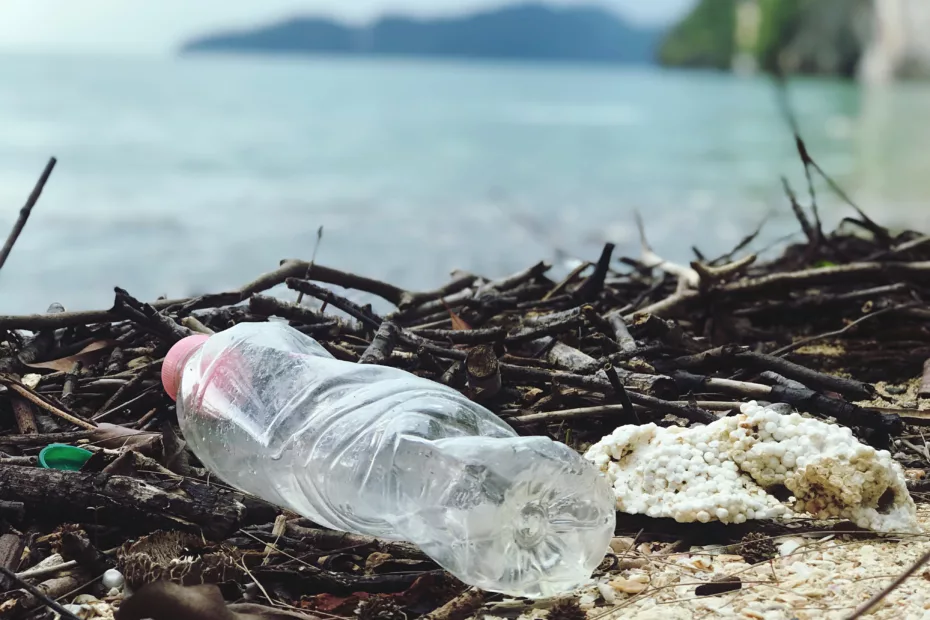Plastic, a little troublemaker that refuses to biodegrade like its organic counterparts, leaving us with a long-lasting environmental headache. It can linger in the environment for hundreds of years, contributing to the never-ending saga of pollution. Daily lives have become tangled with plastic, but this widespread usage exacts a hefty toll on the environment. From single-use items to packaging materials, plastic waste has morphed into a global crisis that demands attention. Even the footwear industry falls prey to this conundrum, particularly in the realm of open footwear such as sandals and flip flops, where plastic materials reign supreme.

Open footwear readily embraces various plastic components like straps, soles, and embellishments, all of which are predominantly crafted from synthetic polymers like polyvinyl chloride (PVC) and polyurethane (PU). These materials possess desirable traits such as durability, flexibility, and cost-effectiveness, making them irresistible to manufacturers. However, their production and disposal yield significant environmental challenges, which are not to be taken lightly.
The utilization of plastic in flip-flops is a varied affair and depends on the design, and fabric employed. Many economical flip-flops, those that won’t break the bank, are crafted with plastic materials, particularly soles made from artificial rubber or polyurethane.
But the tale doesn’t end there! Plastic waste in open footwear can also contribute to the burgeoning conundrum of microplastics. Over time, the plastic components begin to crumble, morphing into minuscule particles known as microplastics. These microscopic fragments venture into water bodies, traversing rivers and oceans through various pathways. Marine creatures may mistake these microplastics for delectable sustenance, ultimately ingesting them and potentially harming their health. Furthermore, these insidious microplastics can accumulate within the food chain, eventually affecting human well-being.

Fear not, for a sustainable solution awaits! Enter the realm of the flip flop revolution, where sustainable materials take center stage, weaving a tapestry of comfort, style, and eco-friendliness. The leading stars of this grand production are:
Recycled Rubber: Witness the rebirth of old tires as soles for flip flops! A magnificent transformation that reduces waste and preserves precious natural resources.
Plant-Based Plastics: Behold the rise of bio-based plastics derived from renewable sources like cornstarch or sugarcane. These materials, used to fashion straps and other flip flop components, possess the magical ability to biodegrade and boast a smaller carbon footprint compared to their traditional plastic counterparts.
Natural Fibers: Prepare to be enchanted by the creative use of natural materials such as jute, cork, and hemp. These marvelous fibers find their purpose in crafting comfortable and sustainable footbeds.
Upcycled Materials: Marvel at the ingenuity of repurposing materials like old yoga mats or oceanic debris to forge one-of-a-kind, eco-friendly flip flops. Witness the transformation of waste into something truly extraordinary.
Water-Based Glues: Rejoice in the triumph of eco-friendly adhesive solutions! Bid farewell to the harmful traditional adhesives of yore and embrace the era of water-based glues that are less toxic and more environmentally friendly.
Why join the illustrious Flip Flop Revolution? A collection of compelling reasons awaits, igniting your passion for this eco-conscious movement:
Reduced Carbon Footprint: Sustainable flip flops, crafted from materials with a lower environmental impact, contribute to fewer greenhouse gas emissions, nurturing a healthier planet.
Supporting Innovation: By investing in sustainable footwear, you lend support to brands that courageously challenge the boundaries of fashion industry norms. Your consumer choices inspire further innovation in sustainable materials and production processes.
Preserving Natural Resources: Through the utilization of recycled and renewable materials, you actively participate in the preservation of our beloved Earth’s finite resources, such as oil and rubber.
Promoting Responsible Manufacturing: The champions of sustainable flip flops prioritize fair labor practices and ethical manufacturing, ensuring equitable treatment and decent wages for workers. By choosing their products, you champion the cause of responsibility and fairness.
Raising Awareness: Proudly donning sustainable flip flops, you become an ambassador for eco-conscious fashion choices, sparking conversations and inspiring others to embark on their own sustainable journeys.
In conclusion, the use of plastic in open footwear manufacturing carries significant environmental consequences, ranging from pollution to waste accumulation and harm to marine ecosystems. However, as consumers, you wield the power to drive change through conscious choices and support for brands that prioritize sustainability.
We would love to hear from you! What changes would you like to see in an open footwear brand like CHUPPS? What matters to you the most when it comes to sustainability, comfort, style, or any other aspect of your footwear choices?
Your suggestions and ideas are invaluable to us. We encourage you to engage with our blog, share your thoughts, and provide feedback. Let’s embark on this journey together, co-creating a footwear brand that truly resonates with your desires and aspirations.
Join the conversation and be a part of the CHUPPS community. Together, we can make a difference, one step at a time.




Very insightful review